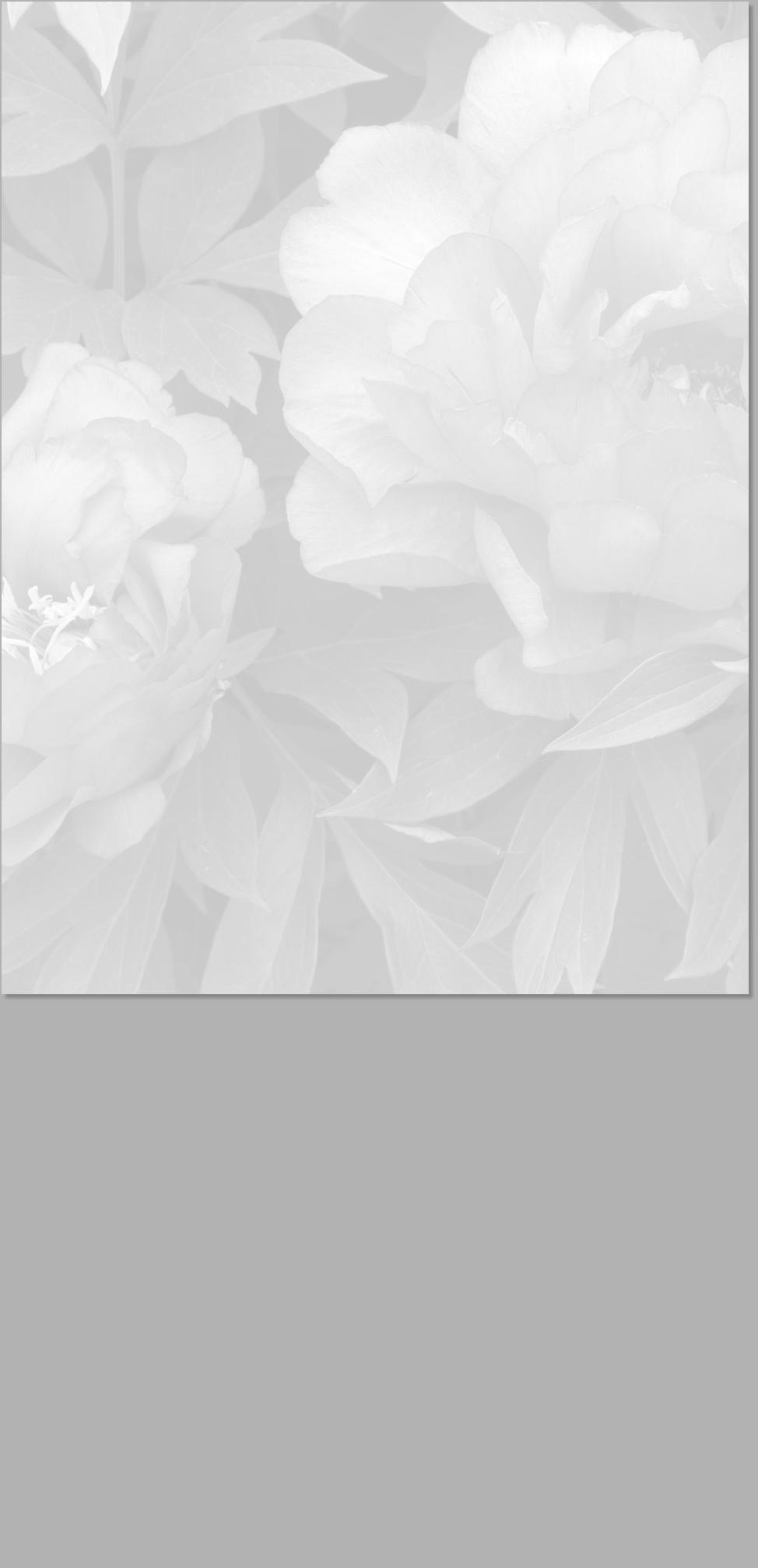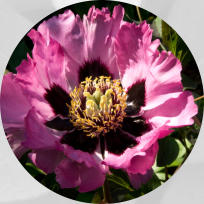
TREE PEONIES: The name is a complete misnomer since these plants are not trees, rather they are deciduous shrubs,
often no more than a metre in height and breadth. In favourable growing conditions vigorous varieties get bigger, but even
then they are clearly shrubs, not trees.
The very earliest records of peonies in China are found in texts dating to about 1000BC and they record herbaceous plants
being grown a thousand years before that. In literature prior to the Qin dynasty (221-206BC) tree and herbaceous peonies
are regarded as the same, and it is only in writings dating to the Han Dynasty (206BC-220AD) that the medical uses of tree and
herbaceous plants are documented and the two types are differentiated. In fact prescriptiions have been found dating to
205-220AD where differing medical uses are described for each.
A famous painting dating from 345-409AD shows tree peonies in bloom along the banks of the Luo river and other paintings by the
same artist show them in bloom in gardens. This evidence is used to indicate that ornamental cultivation began in the 4th to 5th
Centuries AD if not before. To Western eyes, these dates seem fabulously remote and are a reminder of the astonishing antiquity
of Chinese civilisation.
One of the oldest Tree Peonies mentioned by name in texts dating to circa 1034 is still available today - Yao Huang (Yao’s Yellow).
As far as tree peonies are concerned, it is the bark of the roots that have medicinal value, and they are still grown for that purpose
today. During the ‘Cultural Revolution’, the Maoist inspired upheaval which took place between 1966 and 1976, the cultivation of
tree peonies for their floral beauty was regarded as a bourgeois affectation and many such were ripped up by the Red Guard,
and collections were only saved if the owner managed to convince the authorities that they were being grown as a source of
medicine.
They were first introducred to Britain in 1789, when a plant fetched specially from China was planted in the gardens at Kew, and
now thanks to Chinese, Japanese, French and American (but rarely British or German) hybridisers, there are literally thousands of
hybrids available, ranging in colour from pure white through to darkest red (almost black). In between are all shades of cream,
yellow, pink, red and many multicoloured hues. A ‘true’ blue does not exist, nor for that matter, does a rich purple or a ‘true’
long-lasting orange. In addition to colour variation, different flower forms exist, ranging from single to very full double.
It should be noted that the classification and hence terminology relating to tree peonies is age-old and confused. For years
P.suffruticosa was used as a ‘catch all’ term. This now tends to be reduced, although some nurseries and non-specialist suppliers
still use terms like P.suffruticosa ssp. rockii.






